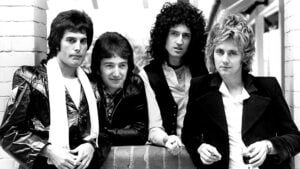10 Pink Floyd Songs That Sound Completely Outdated Today

via @pjamdragon1 / YouTube
Pink Floyd’s music has left a lasting impact on rock history. However, some of their tracks may not resonate with today’s listeners as they once did. Here are ten Pink Floyd songs that, due to various factors, might feel outdated to contemporary audiences.
“Bike” (1967)
From their debut album, “The Piper at the Gates of Dawn,” “Bike” showcases Syd Barrett’s whimsical songwriting. The track features playful lyrics and a carnival-like atmosphere, reflecting the psychedelic era of the late 1960s.
While “Bike” captures the experimental spirit of its time, its quirky sound and production may not align with modern musical tastes, making it feel less accessible to today’s listeners.
“Several Species of Small Furry Animals Gathered Together in a Cave and Grooving with a Pict” (1969)
Featured on the album “Ummagumma,” this experimental track consists of various sped-up vocal and percussion sounds, creating an avant-garde auditory experience.
The absence of traditional instruments and melody, combined with its abstract nature, renders it less relatable for contemporary audiences accustomed to more structured compositions.
“Alan’s Psychedelic Breakfast” (1970)
From the album “Atom Heart Mother,” this track combines instrumental passages with recorded sounds of a man preparing and eating breakfast.
While innovative at the time, the inclusion of everyday sounds and the track’s leisurely pace may not hold the attention of listeners today, who might prefer more dynamic arrangements.
“San Tropez” (1971)
Appearing on “Meddle,” “San Tropez” is a laid-back, jazzy tune that deviates from Pink Floyd’s typical progressive rock style.
Its easygoing rhythm and lounge-like feel, while charming, might come across as dated to modern ears seeking the band’s more signature, expansive soundscapes.
“Seamus” (1971)
Also from “Meddle,” “Seamus” features bluesy guitar accompanied by the howling of a dog, adding a novelty aspect to the track.
This playful experiment, though amusing, may not resonate with current listeners who favor more conventional song structures and themes.
“The Grand Vizier’s Garden Party” (1969)
A three-part instrumental from “Ummagumma,” this piece includes flute solos and various percussive elements, creating an abstract soundscape.
Its experimental nature and lack of a clear melody might make it less appealing to today’s audiences, who may find it challenging to connect with its unconventional structure.
“Corporal Clegg” (1968)
Featured on “A Saucerful of Secrets,” this song addresses themes of war and features a kazoo solo, adding a whimsical touch to its serious subject matter.
The juxtaposition of lighthearted instrumentation with heavy themes, along with its psychedelic style, may feel mismatched and outdated to contemporary listeners.
“A Spanish Piece” (1969)
A short instrumental interlude from “More,” this track features flamenco-style guitar and spoken word elements.
Its brief duration and stylistic departure from Pink Floyd’s typical sound may make it feel like a dated novelty rather than a timeless piece.
“Pow R. Toc H.” (1967)
Another track from their debut album, this instrumental features scat vocals and experimental sounds, embodying the psychedelic experimentation of the 1960s.
While innovative at the time, its abstract nature and lack of lyrical content may not engage modern listeners as effectively.
“Jugband Blues” (1968)
The closing track on “A Saucerful of Secrets,” “Jugband Blues” is Syd Barrett’s final contribution to the band, featuring a brass band section that creates a disjointed, surreal atmosphere.
Its fragmented structure and psychedelic elements may feel out of place to those more familiar with Pink Floyd’s later, more cohesive works.






















